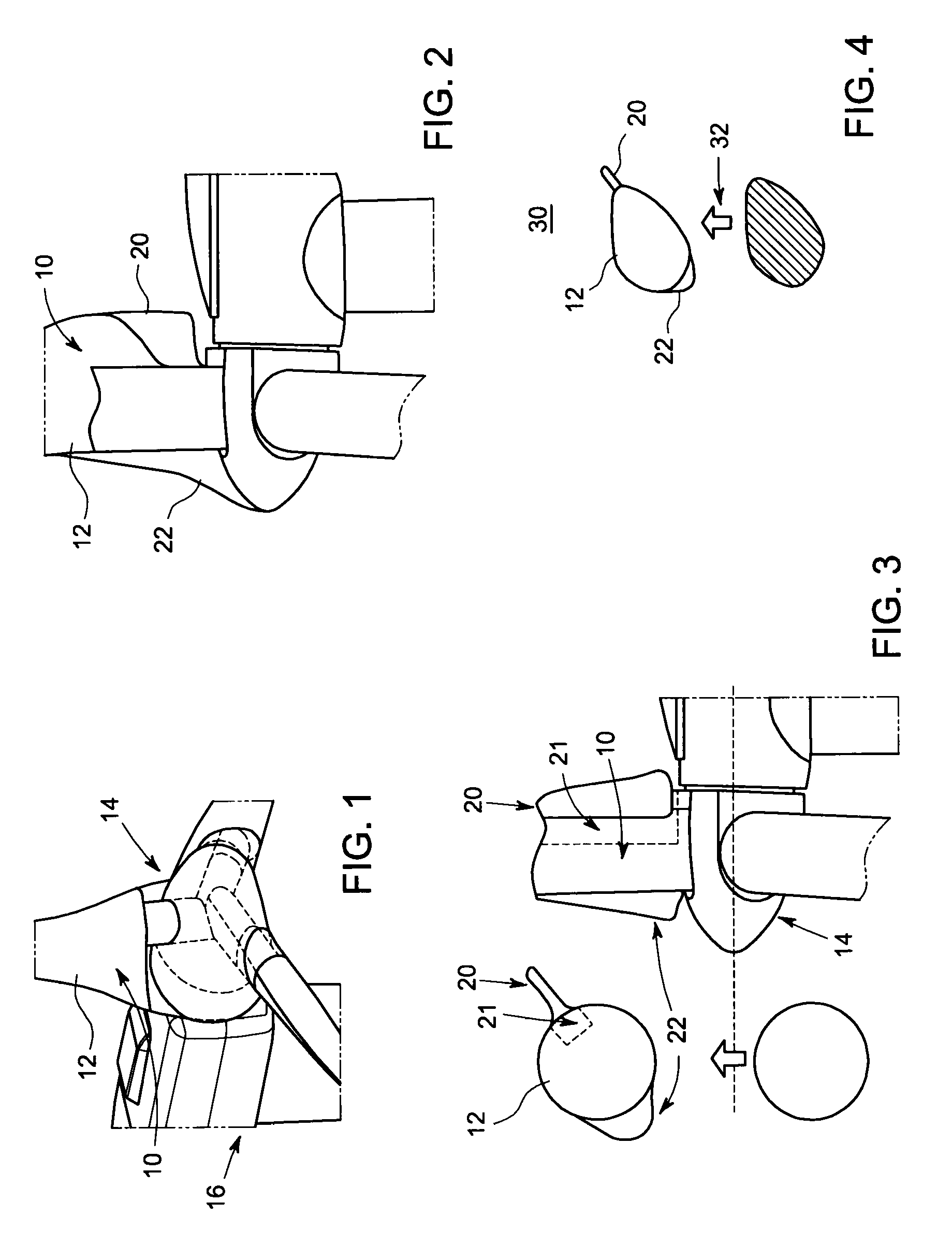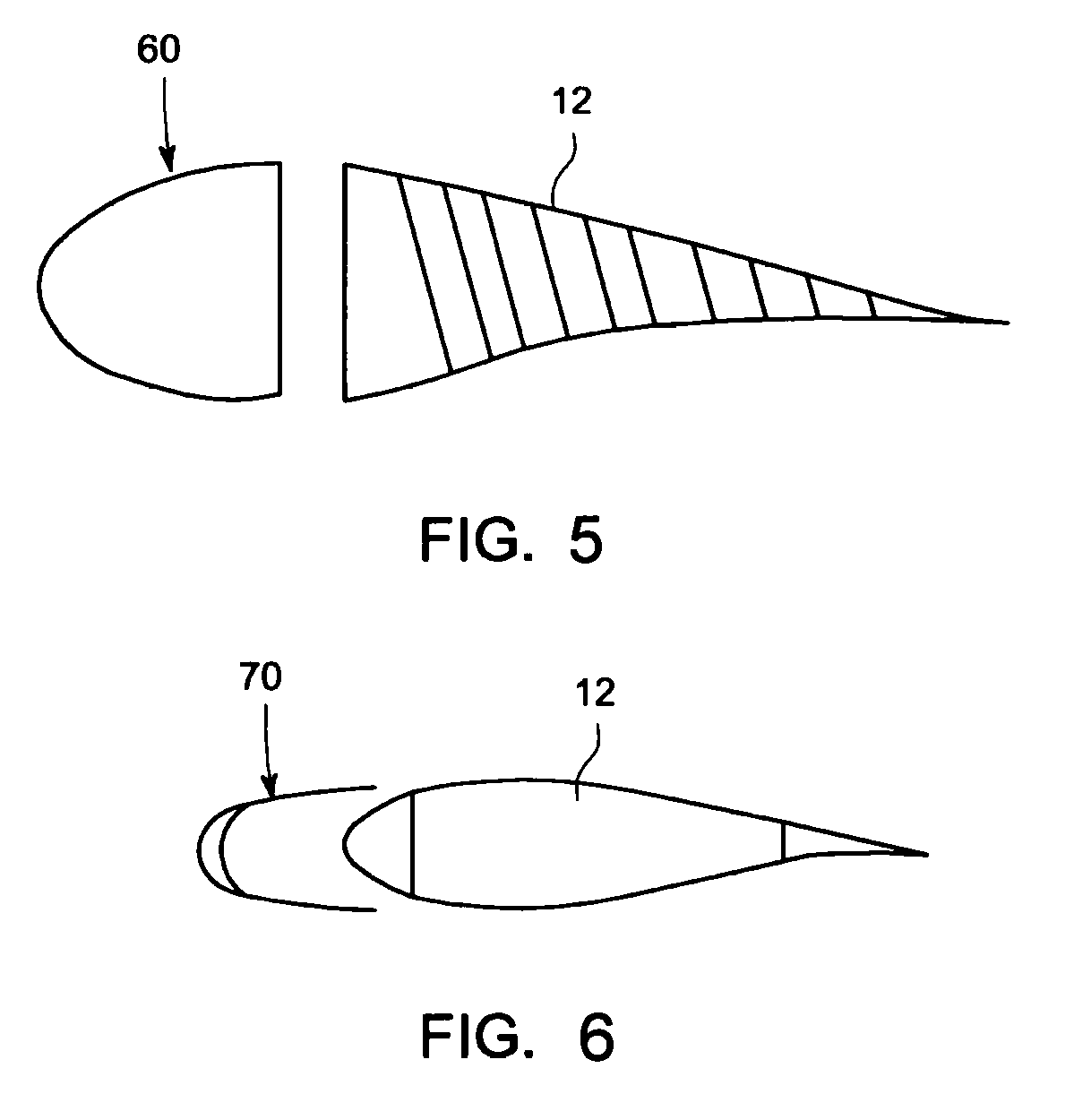System and method for root loss reduction in wind turbine blades
a wind turbine and root loss technology, applied in the field of rotor blades, can solve the problems of poor less than optimal aerodynamic performance, and inability to achieve desired or ideal root attack angles, etc., to achieve enhanced lift to drag ratio, reduce flow separation, and enhance the effect of lift to drag ratio
- Summary
- Abstract
- Description
- Claims
- Application Information
AI Technical Summary
Benefits of technology
Problems solved by technology
Method used
Image
Examples
Embodiment Construction
[0028]FIG. 1 is a perspective diagram illustrating the root region 10 of wind turbine blades 12 according to one embodiment. The wind turbine blades 12 are attached to a rotor disk 14 portion of a wind turbine 16.
[0029]FIG. 2 is side view illustrating the root region 10 depicted in FIG. 1. Each wind turbine blade 12 has a leading edge extension (LEX) 22 and a trailing edge strake (TES) 20 attached to its corresponding root region 10. The present inventors discovered the combination of a leading edge extension 22 and a trailing edge strake 20 provided a means of reducing aerodynamic losses and enhancing torque extraction from the root section of a wind turbine blade 12.
[0030]FIG. 3 illustrates a root region leading edge extension 22 and a root region trailing edge strake 20 attached to a wind turbine blade 12 according to one embodiment. The LEX 22 is attached to the nose of an existing root airfoil section / region 10 and provides both an optimal incidence angle (angle of attack in a ...
PUM
 Login to View More
Login to View More Abstract
Description
Claims
Application Information
 Login to View More
Login to View More - R&D
- Intellectual Property
- Life Sciences
- Materials
- Tech Scout
- Unparalleled Data Quality
- Higher Quality Content
- 60% Fewer Hallucinations
Browse by: Latest US Patents, China's latest patents, Technical Efficacy Thesaurus, Application Domain, Technology Topic, Popular Technical Reports.
© 2025 PatSnap. All rights reserved.Legal|Privacy policy|Modern Slavery Act Transparency Statement|Sitemap|About US| Contact US: help@patsnap.com



